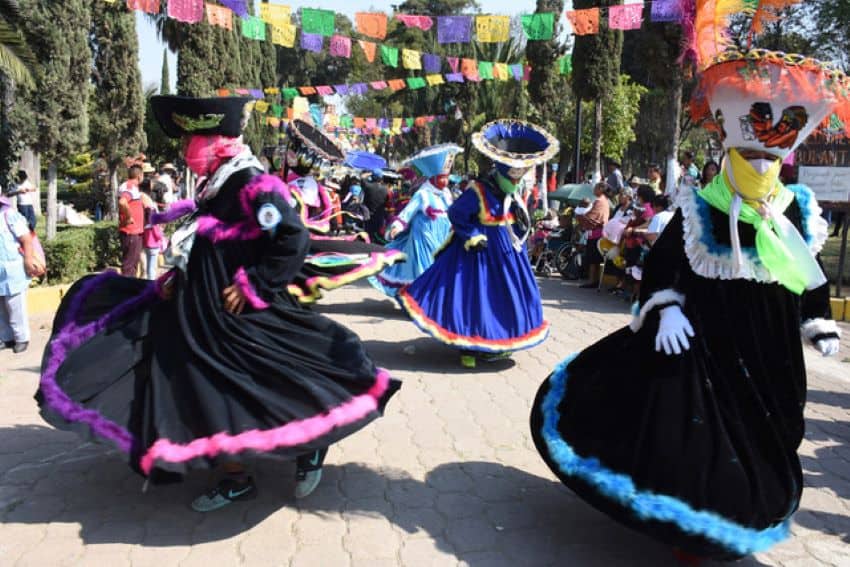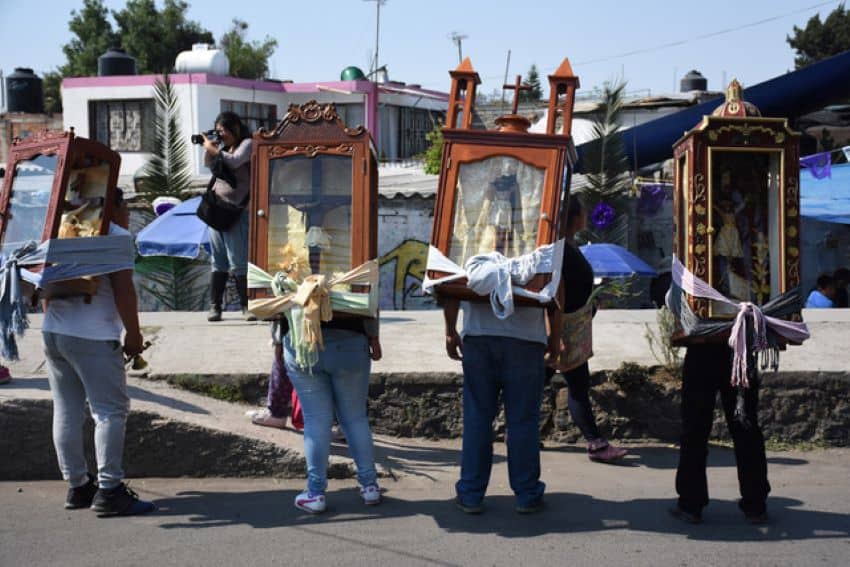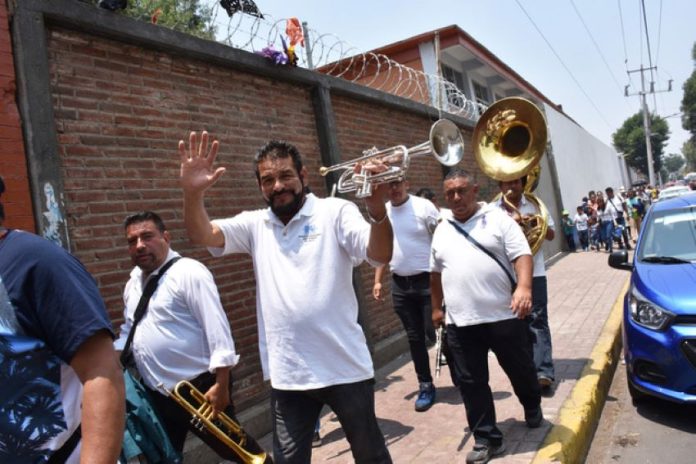There’s always music in Mexico. Whether you like it or not.
You hear it as you walk down the street, spilling out from homes and blasting out from large speakers placed in front of stores. You hear it as you sit on a micro (as small buses are called), although what you usually hear in that case is just the ferociously loud thump of the bass and a healthy dose of static. You hear it long into the night when someone’s celebrating a fiesta de la quinceañera (a birthday party for a girl turning 15). And, of course, you hear it during processions, pilgrimages, recorridos and the multitude of fiestas. Even funerals. What’s often surprising to the outsider is the musical selections during these events.
Take, for instance, processions, pilgrimages and recorridos, which are religious events honoring a particular virgin or saint. Let me explain the difference between these for the uninitiated and/or confused — and I was once one of those. Processions go from one pueblo to another and, although they may take several hours, are completed in one day. Pilgrimages also go from one pueblo to another, but one that’s much farther away. Those take more than a day to complete. And recorridos are treks within a pueblo. All of these feature people with nichos — elaborate boxes with religious figures in them — strapped to their backs, and people carrying candles, banners and a number of other religious objects.
Cohetes, those ubiquitous bottle rockets loudly accompanying any number of events, are a continuous presence.
The bands accompanying these celebrations feature, at least, a couple of trumpet, trombone and clarinet players. There’s also a tuba player and a percussion section consisting of a bass, snare drum and crash cymbals. The larger the celebration, the larger — and louder — the band.

Now, being an outsider, I initially figured that events like these would be accompanied by some sort of solemn music, something you’d expect to hear in a church. But we’re in Mexico. I’m not sure what the music’s called — I’ve been told it’s simply “popular music” — but the musicians play upbeat tunes with gusto and as loudly as they possibly can. At least I think it’s as loudly as they can. If it’s not, I’d rather not be around when they really turn up the volume because as it is, it’s painful to be near them.
Most of what they play are Mexican songs, although some bands have extensive songbooks that they dip into. (Ghost) Riders in the Sky is a favorite. I admit to being more than a little surprised when I heard Another One Bites the Dust. I don’t remember which event it was played at, but it seems it would be appropriate for a funeral — yes, the same kind of music is played.
After attending a number of these events, I had a feeling that, eventually, I’d hear one particularly rollicking tune. I had to wait for some time, but I wasn’t disappointed — or surprised — when I finally heard, Roll Out The Barrel. And, yes, it was during a procession.
Processions, pilgrimages and recorridos usually have just one band playing, and if there is more than one, they generally take turns playing. But during major fiestas, things can get a little wild, such as, for instance, during the feast day of San Gregorio, the patron saint of San Gregorio Atlapulco in Mexico City. Since they’re honoring their patron saint, Chicuarotes (as residents are known) pull out all the stops. First, of course, there was a Mass that easily went on for over two hours; some priests tend to relish the spotlight. After that, the fiesta, and the chaos, begins.
During the last one I attended (pre-pandemic), there were at least six bands in the churchyard. As soon as the Mass was done, a mariachi band started playing a lovely tune, but they were soon drowned out by a nearby brass band that blasted out a song. This was either a signal or a challenge to the other bands since they all started up, each playing a different song, each playing as loudly as they possibly could. A veritable battle of the bands with religious overtones. Or undertones.

Each band had a group of chinelos, traditional dancers, dancing in front of them. Chinelos dress in colorful, flowing costumes, large hats and masks. Their dances are mostly small, shuffling steps alternating with swirls done vigorously so that their costumes billow out. After some time, the chinelos, along with people who had nichos strapped to their backs, led the bands out of the churchyard, each going slowly in a different direction, trailed by dozens of people and accompanied by the boom of cohetes exploding. Eventually, the churchyard emptied out and quieted down, leaving me mostly alone as a gentle rain began to fall.
Joseph Sorrentino, a writer and photographer, is a regular contributor to Mexico News Daily. More examples of his photographs and links to other articles may be found at www.sorrentinophotography.com He currently lives in Chipilo, Puebla.
